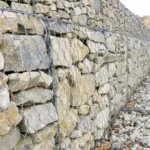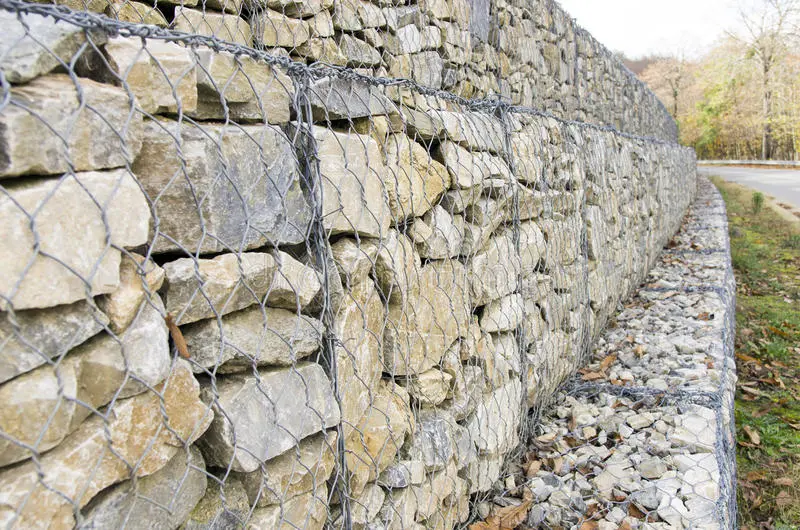When it comes to building a retaining wall, the choice of material can make all the difference in performance, durability, cost, and aesthetics. Among the most popular options are segmental block retaining walls and poured concrete walls. Both have their advantages, but each suits different landscapes, budgets, and design preferences. Let’s discuss the key differences, pros and cons, and which option may be best for your next project.
Understanding Retaining Walls
Retaining walls are built to hold back soil, prevent erosion, and create level spaces on sloped terrain. Beyond functionality, they contribute to the overall beauty and structure of a landscape. Choosing between segmental blocks and poured concrete depends on the balance you want between strength, flexibility, cost, and appearance.
What Are Segmental Block Retaining Walls?
Segmental block retaining walls are constructed from interlocking concrete blocks that fit together without the need for mortar. The individual blocks are stacked in a specific pattern, often with a slight backward lean (called batter) for added stability. These systems are designed to flex slightly, allowing them to handle minor ground movements and drainage changes without cracking.
Key Features:
- Made from precast concrete blocks
- Dry-stacked (no mortar required)
- Designed with built-in locking mechanisms
- Easily repairable and replaceable
- Often used for landscaping and garden walls
What Are Poured Concrete Retaining Walls?
Poured concrete retaining walls are formed by pouring liquid concrete into molds reinforced with steel rebar. Once cured, the result is a solid, monolithic wall. These walls are strong, seamless, and capable of withstanding high loads, making them ideal for taller structures or commercial applications.
Key Features:
- Continuous, solid concrete structure
- Reinforced with steel for strength
- Can be textured or faced for aesthetics
- Excellent for large-scale or high-load applications
- Requires professional installation and curing time
Strength and Durability
When comparing both materials, strength is a critical factor.
Segmental Block Walls
Segmental block walls are built to be flexible. Each block interlocks, allowing the wall to adjust to minor shifts in the ground without losing integrity. This flexibility makes them particularly suitable for residential landscaping, where soil conditions can vary.
However, because they’re made of individual units, their load-bearing capacity is limited. Walls over 4 feet typically require geogrid reinforcement or professional engineering to ensure stability.
Poured Concrete Walls
Poured concrete offers superior compressive strength and can handle higher loads. It’s ideal for taller retaining walls, commercial properties, or slopes with heavy soil pressure. The solid structure resists displacement and remains stable even under significant weight.
However, its rigidity means that if the ground shifts or drainage fails, the wall can crack—and repairing those cracks isn’t always simple.
Verdict:
For sheer strength and load capacity, poured concrete wins. For flexible, smaller applications, segmental blocks perform exceptionally well.
Aesthetic Appeal
Appearance matters, especially in residential landscapes where retaining walls double as decorative features.
Segmental Block Walls
Segmental blocks come in a wide range of colors, shapes, and textures that mimic natural stone or brick. They blend beautifully with gardens, patios, and pathways. Because they’re modular, you can design curves, corners, and terraced effects easily.
Their natural look and versatility make them a favorite for homeowners seeking a balance between beauty and function.
Poured Concrete Walls
By default, poured concrete has a modern, minimalist appearance. It can be left smooth for an industrial look or treated with stamping, staining, or veneers for a more decorative finish. However, custom finishes add to the cost and require skilled contractors.
Verdict:
For aesthetic variety and design flexibility, segmental block walls take the lead. But if you prefer sleek, modern designs, poured concrete offers a bold statement.
Installation Process
How each wall is built directly affects cost, time, and required expertise.
Segmental Block Installation
The installation process is relatively straightforward and can even be a DIY-friendly project for smaller walls. Here’s how it typically goes:
- Excavate the trench and lay a compacted gravel base.
- Place and level the first course of blocks.
- Stack blocks in staggered rows, ensuring proper alignment.
- Add drainage materials (gravel and perforated pipe) behind the wall.
- Backfill and compact as you build upward.
Because no mortar or curing is involved, the wall can be completed faster. Small repairs are also easier—individual blocks can be replaced without rebuilding the whole structure.
Poured Concrete Installation
Building a poured concrete wall requires professional handling:
- Excavation and footing preparation are completed.
- Formwork (temporary molds) is built and reinforced with steel rebar.
- Concrete is poured and leveled, then left to cure for several days.
- Once cured, forms are removed and the surface may be treated or finished.
While this process ensures high strength, it’s labor-intensive and requires precision. Any error in mixing, pouring, or curing can lead to cracks or uneven surfaces.
Verdict:
Segmental block walls are faster and simpler to install, while poured concrete demands more expertise and time.
Drainage Considerations
Proper drainage prevents hydrostatic pressure (water buildup) behind the wall, which can cause failure over time.
Segmental Block Walls
Most block systems are designed for natural drainage. Gaps between the blocks and the gravel backfill allow water to flow through easily. In addition, perforated drainpipes are typically placed behind the wall base to redirect water away.
Poured Concrete Walls
Because poured concrete is impermeable, it doesn’t allow water to pass through. Therefore, a well-designed drainage system—including weep holes, gravel layers, and pipes—is essential to relieve pressure. Without it, water buildup can lead to cracking or structural failure.
Verdict:
Segmental block walls are naturally better at handling drainage, while poured concrete requires careful planning.
Maintenance and Repairs
Every retaining wall requires some level of maintenance to ensure longevity.
Segmental Block Walls
Maintenance is minimal. If a section becomes damaged, you can replace individual blocks easily. Occasional checks for soil movement and clearing drainage channels are usually sufficient.
Poured Concrete Walls
Concrete walls are sturdy but not immune to cracking or surface wear. Repairing cracks or resurfacing requires special materials and professional help. Over time, staining and weathering can also affect the wall’s appearance.
Verdict:
Segmental block walls are easier and cheaper to maintain compared to poured concrete walls.
Cost Comparison
Cost is often the deciding factor for most property owners.
Segmental Block Walls
- Material Cost: Moderate
- Labor Cost: Lower (especially for DIY projects)
- Maintenance: Low
- Lifespan: 50–100 years with proper care
Poured Concrete Walls
- Material Cost: High
- Labor Cost: Higher due to complexity and curing time
- Maintenance: Moderate (crack repairs, sealing)
- Lifespan: 75–100 years or more
Verdict:
Segmental block walls are generally more affordable upfront, while poured concrete is a long-term investment with higher initial costs.
Environmental Impact
Sustainability is another consideration, especially for eco-conscious homeowners.
- Segmental Blocks are often made from recycled concrete or locally sourced materials, and their dry-stack design minimizes chemical use.
- Poured Concrete involves cement production, which has a higher carbon footprint. However, it offers exceptional longevity, reducing the need for replacement.
Verdict:
Segmental block walls are slightly more eco-friendly due to lower energy consumption and material flexibility.
When to Choose Each Type
Choose Segmental Block Walls If:
- You’re building a wall under 4–6 feet tall.
- Aesthetic flexibility and DIY installation matter to you.
- The site has moderate soil pressure.
- You want a cost-effective, easily repairable solution.
Choose Poured Concrete Walls If:
- The wall will be taller or support heavy loads.
- You prefer a modern, monolithic look.
- Professional installation is within your budget.
- You need maximum strength and permanence.
Final Thoughts
Both segmental block and poured concrete retaining walls have distinct advantages depending on your landscape needs. Segmental block walls offer beauty, flexibility, and affordability—perfect for gardens, terraces, and residential yards. In contrast, poured concrete walls deliver unmatched strength and durability, ideal for commercial properties or challenging terrains.
If you want a retaining wall that blends beauty with durability, we highly recommend consulting rainierrockeries.com for retaining walls in Medina, WA. Their professional approach guarantees a hassle-free experience and results that enhance any landscape.
When choosing between the two, consider site conditions, wall height, design preference, and budget. Consulting with a landscape or structural engineer can also help ensure that your retaining wall not only looks great but also stands strong for decades.

 How Realtors Can Sell Homes Faster with Staging
How Realtors Can Sell Homes Faster with Staging  How Often Should a Roof Be Replaced?
How Often Should a Roof Be Replaced?  What to Do During a Pest Control Treatment: Safety Protocols
What to Do During a Pest Control Treatment: Safety Protocols  Segmental Block vs. Poured Concrete Retaining Walls: A Comparison
Segmental Block vs. Poured Concrete Retaining Walls: A Comparison  Narra Residences Unveil Supreme Elegance in Singapore’s Dairy Farm Walk
Narra Residences Unveil Supreme Elegance in Singapore’s Dairy Farm Walk  Emergency Roof Repair in Wyoming: What to Do When Disaster Strikes
Emergency Roof Repair in Wyoming: What to Do When Disaster Strikes  Red Flags to Watch Out for When Choosing a Real Estate Agent
Red Flags to Watch Out for When Choosing a Real Estate Agent  How Site Preparation Impacts the Success of Concrete Construction
How Site Preparation Impacts the Success of Concrete Construction  Florida’s Venomous Spiders: What to Know and When to Worry
Florida’s Venomous Spiders: What to Know and When to Worry 